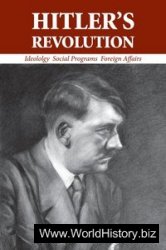Richard III still lives, at least in the form of being the catalyst or centerpiece of a thriving historical industry. History and legend and uncertainty combine to keep him before us, and the interest he continues to generate—largely as a consequence of the mystery of the princes and the dark legend—draws a wide public to his tale. Beyond doubt and beyond any of his peers or counterparts on the throne, he is the most intriguing of all the medieval English kings, the one who commands the most attention, the king about whom the laity as well as professional academics are still inclined to argue. History buffs of all sorts follow his life and times in great detail, whereas more important (and longer-lived) kings are relegated to the obscure setting of the classroom or the scholarly monograph. Harsh words are still exchanged at meetings, during and after lectures, and on field trips to the various Ricardian shrines as people continue to take sides in the great debate.
As a gauge of Richard III’s popularity and the fascination that surrounds him we can call him up on the electronic catalog of the New York Public Library. Under the subject heading of “Richard III king of England” the library lists 306 items (as of March 13, 2011; the number increases steadily). Though this number contains duplications, and some of the books listed are more general in their focus (as is true for most subject searches), and many of the entries relate to Shakespeare’s play, 306 entries is still a vast number for a man who reigned for only 27 months and who was killed more than 520 years ago. If we compare the catalog entries for Richard III with those for kings with a much greater impact on medieval England, we get an idea of Richard’s towering presence. For William the Conqueror, with whose invasion in 1066 medieval English history can be said to begin, we find 116 items. Nor does anyone else rival Richard, with or without benefit of Shakespeare. Henry II has 107 entries; for the great warrior-hero Henry V there are 188 (and he too is a Shakespearian hero of formidable proportions); for Richard I the Lionhearted of undying crusading and martial fame 129; and for Richard II, victim of deposition in 1399 and also the centerpiece of a play by Shakespeare, 169 entries. The 306 entries under Richard III are a mix of those works that support the monstrous and perfidious image, those that labor to refute it, and those concerned to follow routes of scholarly inquiry with limited commitment to partisan colors.
Much of the Ricardian partisanship has been organized and published under the aegis of the Richard III Society. The society was founded in 1924, and “in the belief that many features of the traditional accounts of the character and career of Richard III are neither supported by sufficient evidence nor reasonably tenable, the society aims to promote research into the life and times of Richard III and to secure a re-assessment of the Material.” Whatever the society’s existence has done to balance the partisanship of the centuries—and the answer is a good deal—it has also encouraged scholarly inquiry into virtually any and all aspects of late medieval life that can be, even in a remote fashion, connected to Richard of Gloucester. The society issues a regular publication for serious scholarly contributions (The Ricardian), holds conferences, brings out collected volumes of papers reprinted from The Ricardian (such as Richard III: Crown and People in 1985 and Tant D’Emprises—So Many Undertakings in 2003), and in general and divers ways tries to draw public interest in its topic and its hero. Aspects of Richard that have little to do with his usurpation or the princes in the Tower also generate interest: his books, his religious convictions and devotions, his role as a benefactor of ecclesiastical and educational institutions, the lives and careers of many who served him, and more along these and other lines. Serious investigations of Jane Shore’s genealogy, as well as that of Eleanor Butler’s family and their dealings with Edward IV, show that gossip about the bedrooms of the royals is not confined to current tabloids and talk shows.
The nonacademic aspects of the Richard III industry also testify to the sustained life of his myth and the dark legend. The Richard III Society, with close to 4,000 members in 26 countries (as counted around 1990) organizes trips and expeditions to various Ricardian sites and shrines, as well as marketing the usual collection of memorabilia: mugs, ties, commemorative plates, and other souvenirs that rival medieval pilgrim badges. Sites that resonate in the life and career of Richard and others around him are scattered across the English landscape, though they tend to cluster in the north, and dutiful expeditions are regularly made. Informed by academics and others versed in the life and times, people from many parts of the world—not all of them An-glophonic—assemble and travel to Ricardian remembrances at Middleham in Yorkshire (where Richard and Anne lived), at Sheriff Hutton (where their son may be buried in the parish church), at Berwick (which Richard captured from the Scots in 1482), at Barnard Castle and at Raby (associated with his mother Cecily), at Fotheringhay (where he was born and his father reburied), at the towers he added to Warwick Castle, and at many other places. The battlefields of the Wars of the Roses, such as Saint Albans and Barnet, are of interest, as is the fatal but confused site at Bosworth (Ambion Hill, where Richard’s pennant of a white boar now waves). In 1960 a plaque was dedicated in Westminster Abbey to mark the burial, though perhaps not the actual burial site, of Anne Neville, his queen, and a statue in the Castle Gardens at Leicester tries to remedy the callous treatment Richard’s body received after he fell in battle.
What else do we know about him? We have numerous portraits of Richard, some going back to the early years of the sixteenth century; a panel painting of about 1516 shows no sign of deformity, though later pictures either began with this idea or were altered to emphasize misaligned shoulders and so on. The “Beauchamp Pageant” (a British Library manuscript of the 1480s) shows Anne Neville with both her husbands and the son she bore Richard (who also had three illegitimate children, all openly acknowledged and all conceived before his marriage to Anne).
We have various artifacts and material possessions that relate directly to Richard; a plaque with the initials “A & R” for Anne and Richard, a badge of the boar that was his sign, and books that he signed and annotated and over which he clearly spent some time. Richard seems to have been a man of medium size, smaller than his brother Edward, and probably fitting under our generalization of dark and wiry, perhaps much like his father (whom we know from a few stained-glass windows). Like others of his family, he had some intellectual as well as philanthropic and spiritual interests, though he did not reign long enough to indicate whether his court would be a center of chivalric culture comparable to that of his brother or of his sister, Margaret of Burgundy. But he could hold his own among men of culture and letters.
In the book-review section of The Ricardian are listings of historical fiction with a Ricardian theme, and in those 306 entries in the New York Public Library’s catalog there are 42 tagged as fiction, 16 as literature, and 1 as juvenile literature. Touching the Ricardian world there are even a few “classics,” with a liberal definition of what it takes to be a classic. There is the early-Victorian Last of the Barons (1843) by Edward Bulwer-Lytton, dealing with Richard’s father-in-law, or Robert Louis Stevenson’s The Black Arrow, an engaging boy’s view of the Wars of the Roses. But the list of fiction runs from history-mysteries (with Tey’s book in a class by itself as an intriguing blend of genres) to bodice-rippers of interest but limited literary merit. Neither the princes nor Richard’s mother (The Rose of Raby) has cause to complain about authorial neglect.
Beyond the printed page, there is the world of film, and here too Richard III has left his mark. The major Ricardian film is Laurence Olivier’s 1955 production of Shakespeare’s play, with some scenes necessarily left out and with the coronation of Edward IV lifted from the previous play in the sequence, Henry VI, Part III, as is often the case in stage productions as well. Olivier’s movie refueled the dark legend at a time when scholarly currents might have begun to run against its cruder stretches, and it still enjoys considerable popularity, if only as a period piece of movie-making. But much earlier in the history of cinema there were short silent films devoted to Richard, the first perhaps being Les enfants d’Edouard (French, runtime: a few minutes) from 1910. A 1913 version of the play ran to 50 minutes, and Richard himself—inspired by but without Shakespeare—achieved full-length status with Tower of London in 1939. This thriller, starring Basil Rathbone as the duke of Gloucester, shows him hacking and plotting his way to the throne, removing a doll from a row of such each time he brings someone down. The 1962 remake with Vincent Price was much less chilling. While no one has duplicated Olivier’s lavish production, a number of BBC versions, and at least one film of a live production at Stratford, have been made. Al Pacino’s (semi-)documentary Looking for Richard (1996) and Neil Simon’s The Goodbye Girl (1977), in which Richard Dreyfuss played “a homosexual cripple in lavender” in order to hang on to his part in an off-off-Broadway production, have caught their share of public interest. The Goodbye Girl was remade for television, and it also enjoyed some success as a Broadway musical. No hit song about Richard—whether rhythm and blues or punk rock—has yet made the charts, but since interest seems perennial there is always hope. To add a different dimension, Richard Loncraine’s Richard III (1995, starring Ian McKellen as Richard) transforms the court of Edward IV and Elizabeth into a 1930s hotbed of fascism (with an eye to Edward VIII and Wallis Simpson), and Bosworth becomes a battle in which the Battersea Power Station in London is destroyed in the final shootout as Richard looks for a motorcycle on which he can escape.




 World History
World History









